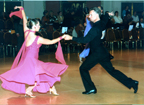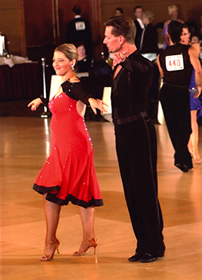
Area Classes • Medal Tests• Yoga/Fitness • Testimonials • Photo/Video Gallery • For Sale • Links •Contact Us
Time and other questions:
 |
What kind of time committment does it take to learn to dance? Everyone learns at a different pace but I usually find that on average it takes 4 or 5 lessons before people start feeling comfortable with basic steps and transitions for one dance. The more dances and steps we add in the more time it takes. Much of it depends on your dancing goals and your prior dance experience. If you are preparing for a wedding or special event it's best to start as early as you can. Don't wait until the last minute. It is unrealistic to think that one or two lessons will make you proficient at any dance. |
What type of lessons are available?
|
|
 |
What styles of dancing do you teach?
|
What class is right for you? I can help you select the appropriate class for your goals. The classes you attend should be challenging but not overwhelming. Some classes are more geared towards figures and variety while others focus on styling, skill level, and technique. |
|
 |
What kind of curriculum do you teach? Many studios have their own programs however the material is all basically the same - with some name differences for variations. My primary training works off the NDCA and NDTA syllabus but I also incorporate the DVIDA and USISTD syllabus. With the material you learn here you will be able to dance any dance, with any partner, any where! |
Virtually every dance studio in the world uses a medalist system of teaching. These different medal levels basically represent levels of proficiency whether you are a competitor or social dancer.
|
Connie Reeves • (608) 335-2982 • info@toplinestudio.com